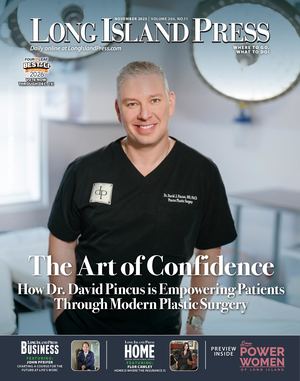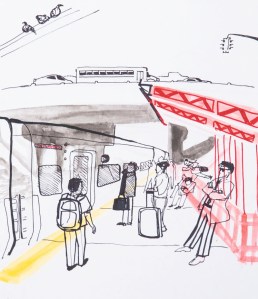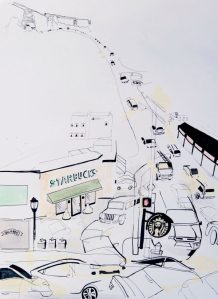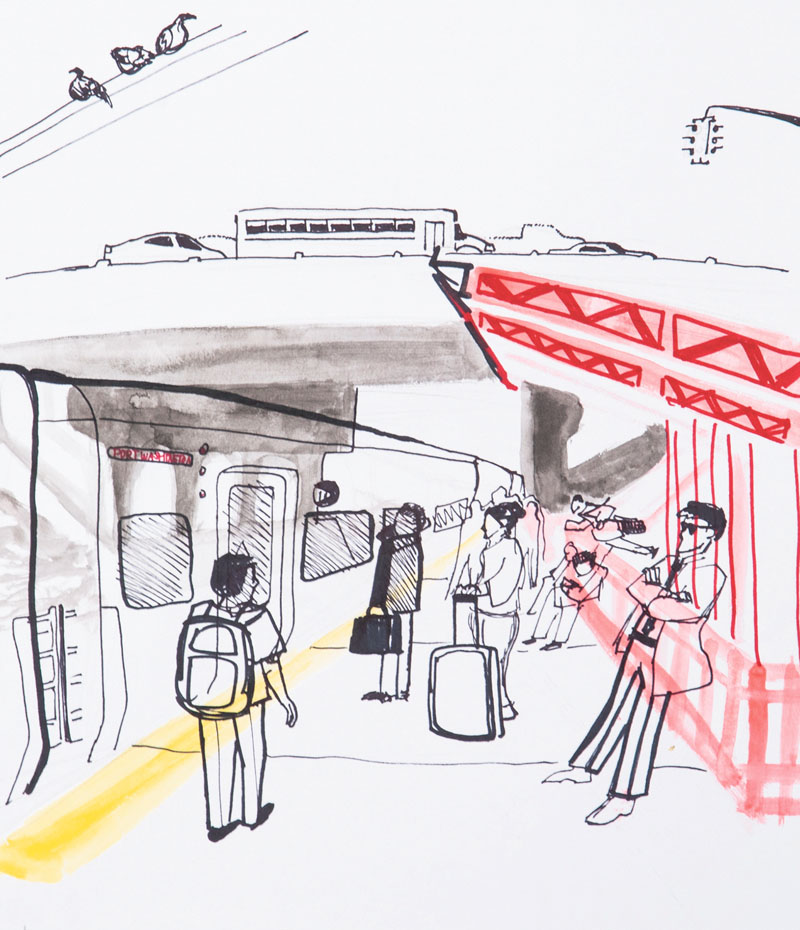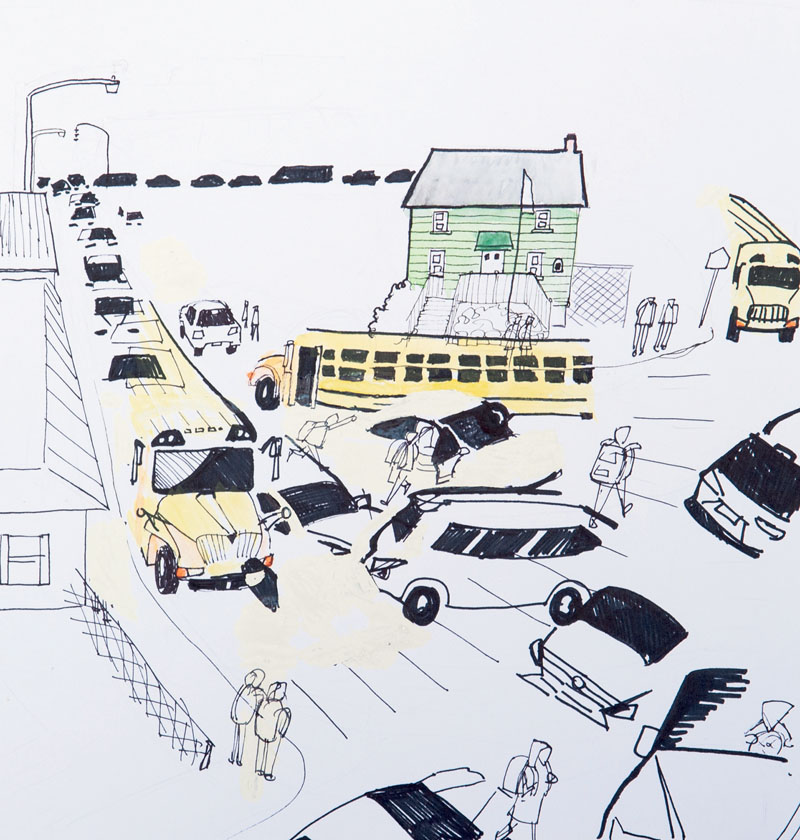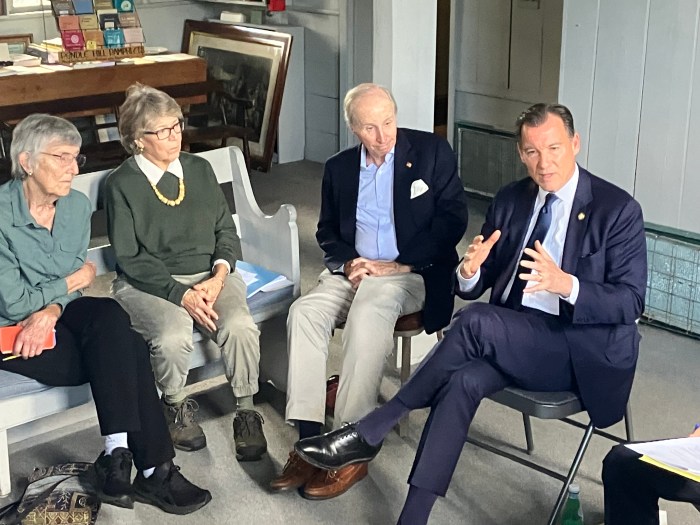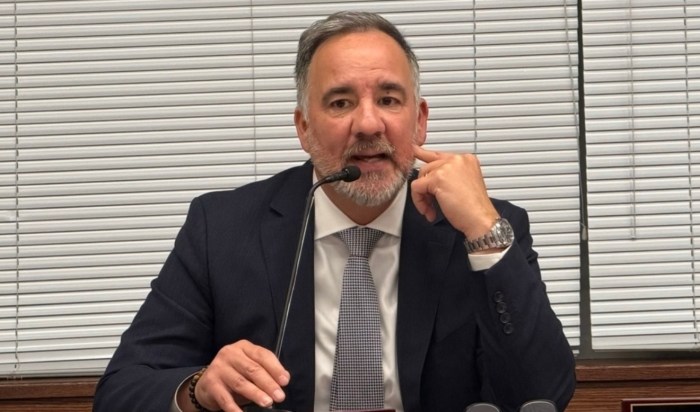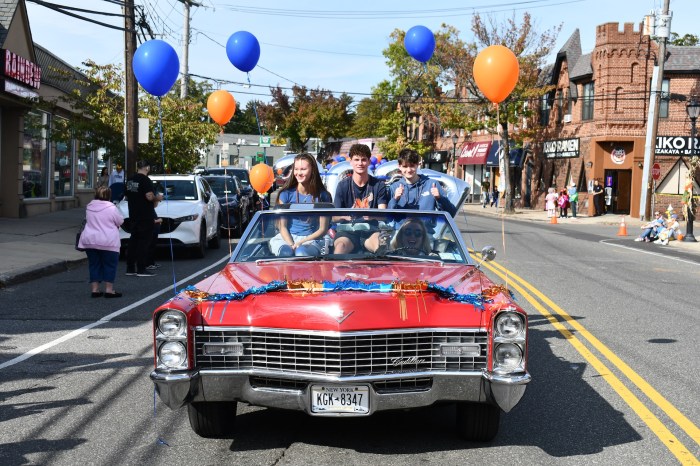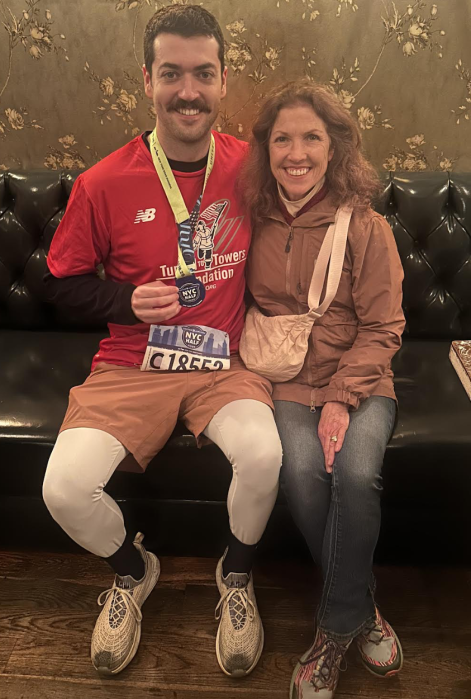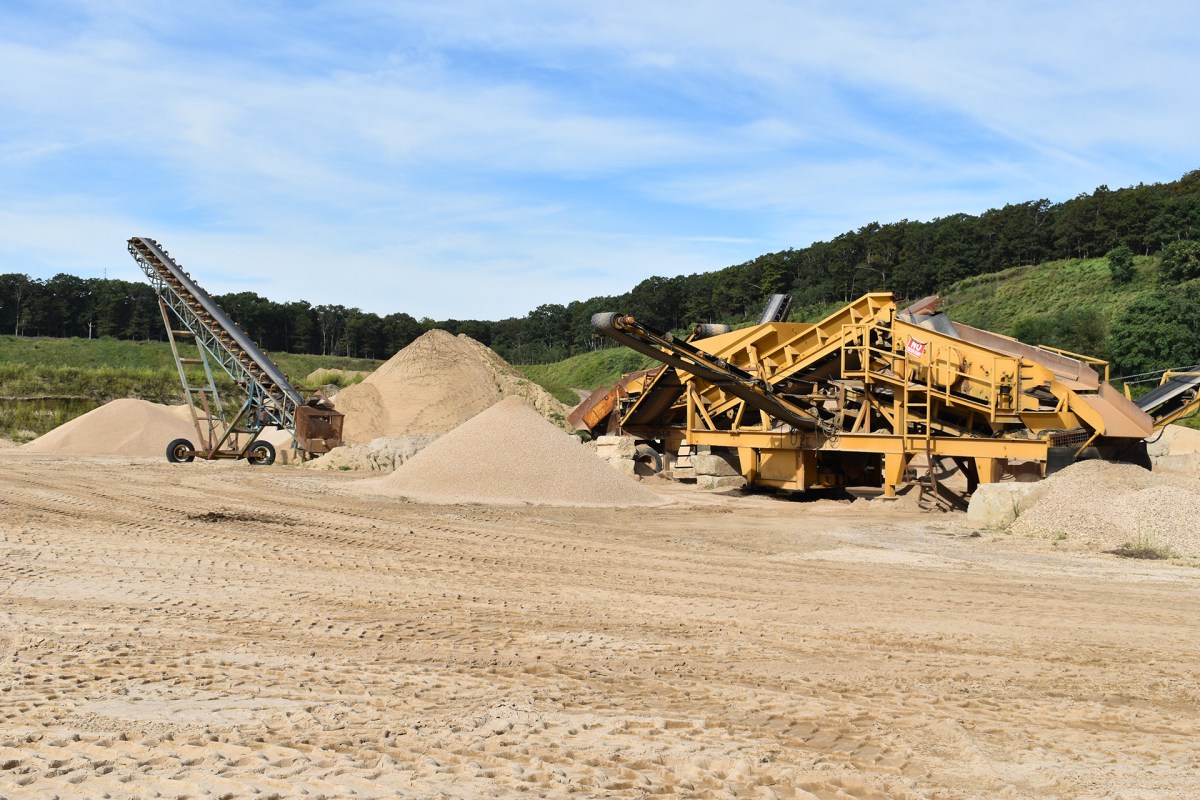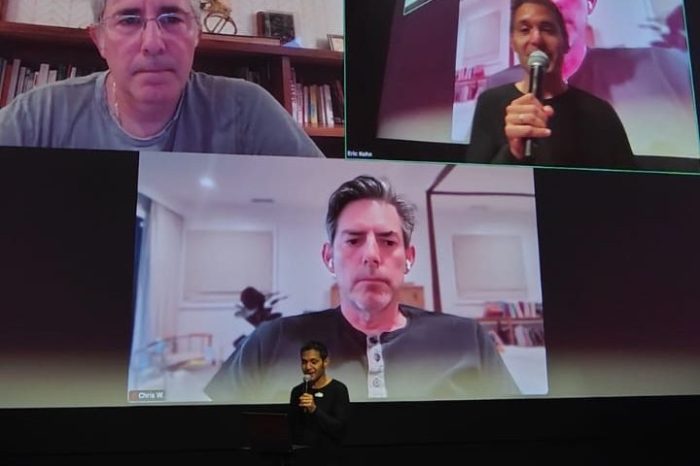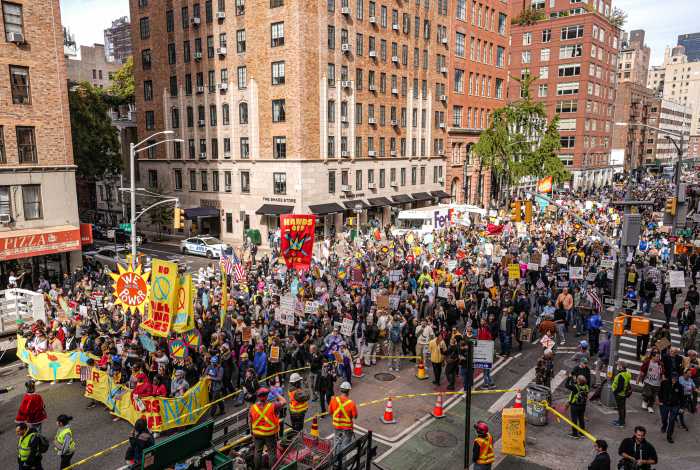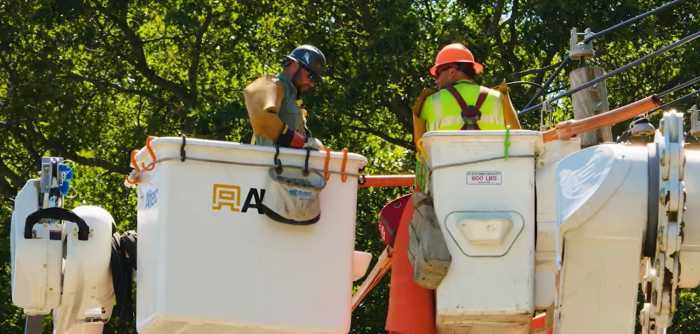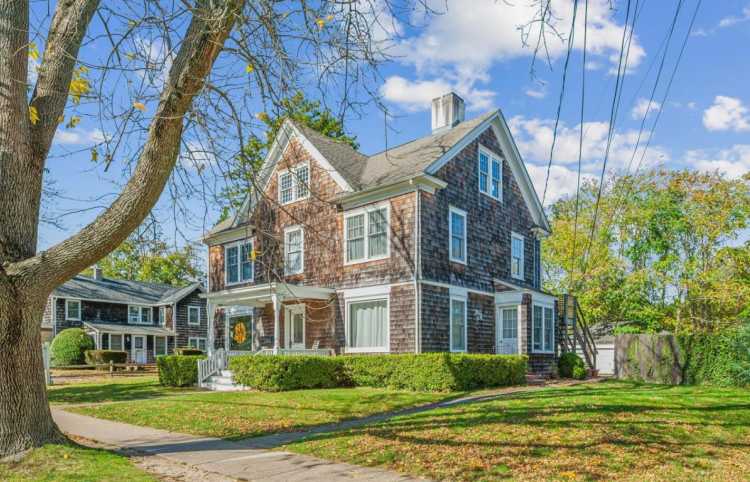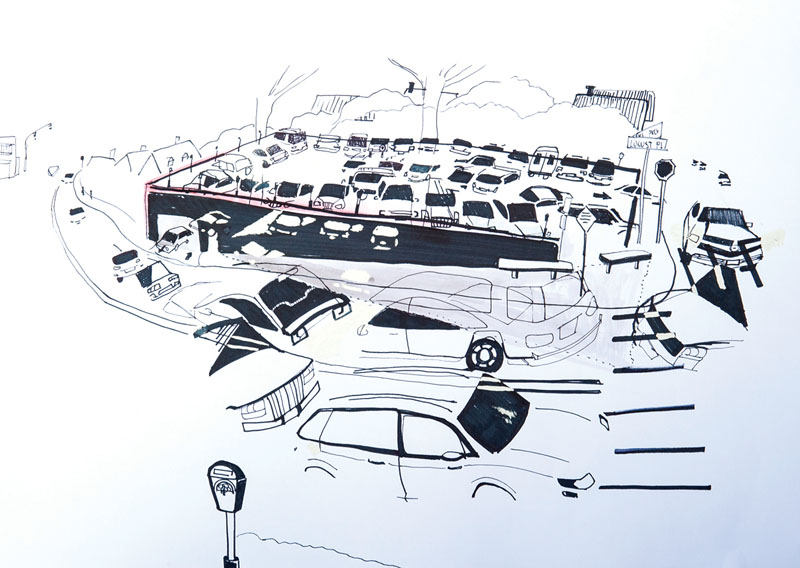
By Thomas Fruhauf
Manhasset is a major transportation hub for commuters. Yet, with this privilege comes an overwhelming amount of traffic.
But local residents are not the only ones causing congestion; many nonresidents, serviced by the Oyster Bay line, use the Manhasset station because of the electric rail system and the convenience of the direct route to Penn Station.
The large amount of traffic from nonresidents and commuters has put a lot of stress on the infrastructure of Manhasset, which needs major upgrades, specifically Plandome Road.
Manhasset Park District (MPD) Commissioner David Paterson believes that traffic congestion has become a huge problem in the past five years.
“The ADT (Average Daily Traveler) is roughly 10,000-12,000 cars per day, many of them not residents of Manhasset,” he said.
Additionally, other roads that feel the brunt of this traffic are Locust Place, Bayview Avenue and Manhasset Avenue.
The peak traffic times are generally 7 through 9 a.m. and 4:30 through 6 p.m. In the morning, there are even more cars on the road when school is in session, making it more congested and harder to park.
Paterson said that in the afternoon cars stretch well beyond the fire station on Bayview Avenue. Many of these back-ups stem from the design of Manhasset’s roadways. Commuters driving back to Port Washington will use Plandome Road as a short-cut, as opposed to using Port Washington Boulevard, which can sustain the higher traffic volume. This continued pattern has turned Manhasset into the bottleneck of the peninsula.
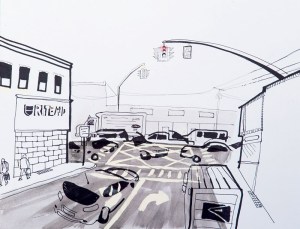
In recent years, there have been some improvements to the heavily used roadways. The Safe Routes to Schools Grant funded the $700,000 project to add a left turn lane on Manhasset Avenue.
“No Left Turn” signs were added at the Mary Jane Davies parking lot. Also the town has recently signed an intermunicipal agreement with the MPD to allow the district to create openings between the Mary Jane Davies parking lot and the district parking lot so that the district can reconfigure its lot to add parking. “No Left Turn” signs have been added on Colonial Parkway to properly direct traffic around the intersection.
Still, Plandome Road is being pushed to its limits and illegal parking and U-turns have now been taking place.
“In order to make the driving safer in Manhasset, we’re going to need more police enforcement, like ticketing U-turns,” said Paterson.
Sue Auriemma, a car safety activist, wants to revitalize the Plandome Road Visioning Project. The project, which was originally proposed back in May 2012, has been stalled.
And it has been six years since any large advancement of the visioning proposal.
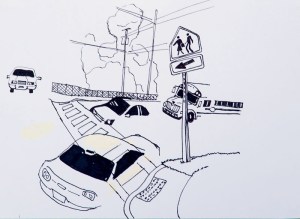 “The safety alone is something to be concerned about,” said Auriemma. “In injury prevention there are three E’s. The first is education, educating our drivers to be more considerate, to know where to pick up and drop off. To not make illegal U-turns. The second is enforcement. To stop people from illegally parking, to stop drivers from stopping at intersections to drop off people at the train and other traffic violations. Lastly, the third is engineering, which is the most effective solution, but is always the most expensive solution.”
“The safety alone is something to be concerned about,” said Auriemma. “In injury prevention there are three E’s. The first is education, educating our drivers to be more considerate, to know where to pick up and drop off. To not make illegal U-turns. The second is enforcement. To stop people from illegally parking, to stop drivers from stopping at intersections to drop off people at the train and other traffic violations. Lastly, the third is engineering, which is the most effective solution, but is always the most expensive solution.”
Auriemma has faith in the proposal and believes traffic calming is the solution, a plan that has been criticized for slowing traffic down, but she says that is the point. Slowing down the traffic will deter commuters from using Plandome Road as a short-cut. Unfortunately, the Safe Routes to School Grant only funded a small portion of the $2.5 million price tag for the full traffic calming project, which will cover Northern Boulevard to Webster Avenue.
The project also included a raised center median on Plandome Road, bulb-out sidewalks to help pedestrians cross safely and a traffic circle to replace the triangle at the end of Locust Place.
Many people believe the traffic circle won’t fit at the intersection of Locust Place and Colonial Parkway, but Auriemma disagrees. She was a major supporter of the painting of Orchard Street to make two definitive lanes, yet the town argued that the lanes would not fit.
If people are still skeptical about the traffic circle, Auriemma would have them look towards the traffic circle along the southeast side of the Great Neck Train Station. Great Neck also uses many of the components suggested in the visioning project.
The traffic circle would allow drivers to turn around, which would deter U-turns. Yet, there is more to this project than just laying down concrete. The bulb-out sidewalks will require additional construction for proper drainage, so water doesn’t collect on the roadways. Unfortunately, these projects are expensive to implement.
Another interesting proposal was a parking garage that would be built in the Locust Avenue parking lot. The lot would house 105 to 110 vehicles, which is nearly double the capacity it has now. A major difficulty for businesses is parking, so providing more space would alleviate the stress on shoppers and business employees.
The Bosworth Administration has taken notice and added six additional spaces in the Mary Jane Davies parking lot for employees.
Still, many businesses want “a wiser use of resources to avoid years of band-aids upon band-aids”. This parking garage was only a proposal, but these are projects that may need to be revitalized for Manhasset.
As for the Plandome Visioning Project, Town of North Hempstead communication director Carole Trottere said, “There are no plans for any future ‘visioning’ projects for Plandome Road at this time.”
Still, Auriemma believes, “The squeaky wheel gets the grease.”
